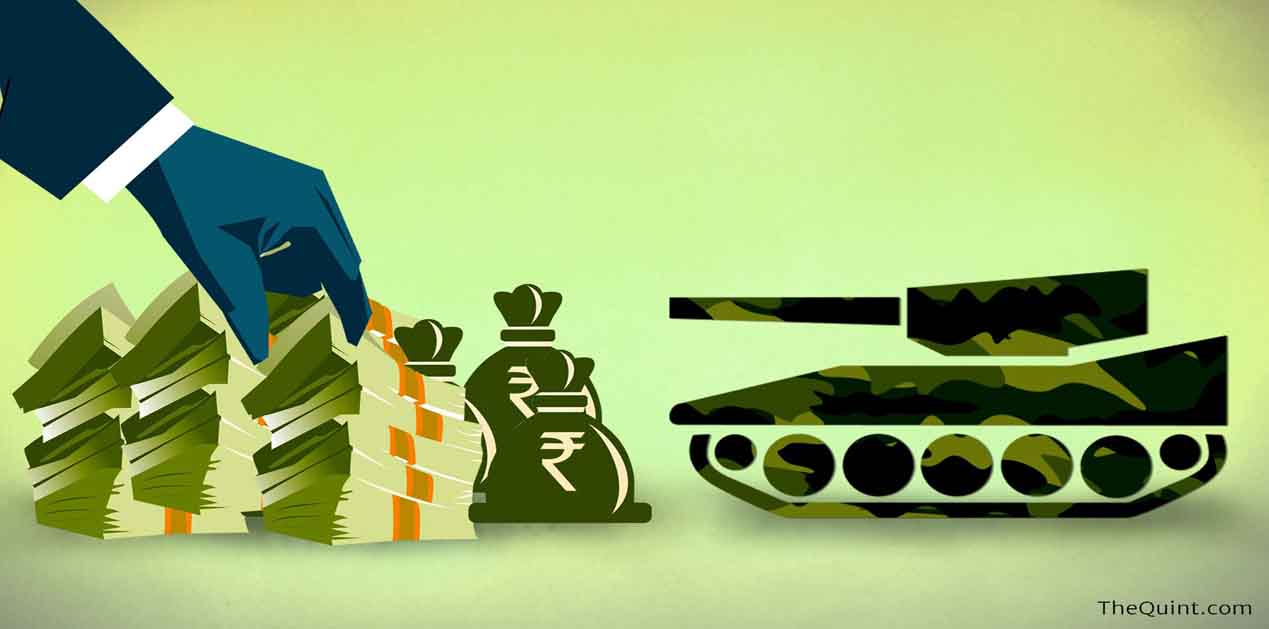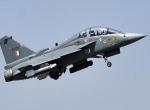Making the Services Qualitative Requirement (SQR) for a weapon system or an equipment not only marks the beginning of a defence procurement case, but also is a foundation on which rests the entire edifice of the subsequent procedure. Whether the effort of many years will result in realising the weapon/equipment desired, or the case will fall, is decided in many cases on soundness of the SQR or the lack of it.
It has been more than a year and a half (since March 2016) since the SQR appeared in their new formulation in the Defence Procurement Procedure (DPP) 2016. The run time thus far has however shown that the real power of the new dimensions of the SQRs in the DPP - namely, utilising multiple options, capability to provide to a discerning user the stretch capability in a weapon system in a finite time, rewarding a vendor who promises to provide 'more than the minimum bottom line', not getting tied to a fait-accompli of a lowest quote (L-1), etc. - have somehow not been fully utilised by the users at large.
The above assertion flows out from the observation that in most of the procurement cases now rolling out anew, the users (especially in the Army cases) are by and large still seen to be following the conventional set of a uni-dimensional SQR, where the minimum bottom line profile parameters are quoted as the base line one. There is hardly any attempt to quote a parameter (range, rate of fire, band/area of operability, high altitude capability etc.), which is presently not available but is operationally required in the foreseeable future, and which a prospective vendor can take it as a challenge to provide in a finite time frame provided it resides in their stretch of capability domain. Also, such SQRs as quoted above do not utilise the option of rewarding promising vendors who are ready to provide beyond the minimum bottom line. In that they are doomed to the L-I syndrome where a lower capability and inferior solutions score over more enabled, albeit costlier, option out of further consideration.
This paper makes an attempt to revisit the enabling options now available in the SQR with an aim to provide a brief in drawing out a draft SQR. Since all is not that simple and straight forward as it looks in the DPP narration of SQR nuances, points of caution, based on the author's experience have therefore been quoted, where necessary.
The current format of SQR has the following three parameters:-
Essential Parameters- A (EP-A)
Parameters that are part of the contemporary equipment available in the market and form the core of the SQR. These are to be tested and validated at the Field Evaluation Trials (FET) stage itself.
Essential Parameters- B (EP-B)
The important attributes of EP-B are that while these are not available originally in the equipment fielded for the FETs, the same can be developed and achieved by the vendors using available technologies. EP-B are basically meant to meet different/higher specifications for specific operational requirements. These need to be tested and validated within a specified timeframe as stipulated in the Contract. The said tests must validate that (by having EP-B) there is no adverse effect on any of the EP-A. Also, the vendors need to provide an undertaking (by way of an additional Bank Guarantee between 5-10 percent of contract value) at the bid submission stage that they will develop and meet EP-B. The exact percentage is to be decided by the Acceptance of Necessity (AoN) according authority.
Failure to meet EP-B in the stipulated timeframe will make a vendor lose all bank Guarantees. EP-Bs are non-negotiable requirements to be met by the vendor prior to the commencement of equipment delivery. These are to be incorporated only when required. These need to be approved by the Defence Acquisition Council (DAC).
Points of Caution
Since EP(B) relates to those parameters which are currently not available in the products being offered for procurement, the user has to be very sure about two aspects of EP(B) before including them in the SQR. The first of these is the conviction of the user, that that a particular parameter (read capability) which is currently not there in the equipment being offered (say a higher range or a higher rate of fire) is essentially required by the user as his operational requirement. Secondly, the user has a total confidence and assurance in his mind that the additional capability being asked for through EP(B) can actually be developed by the vendor in a specific time frame which will be stipulated in the Contract. This belief of the user has also to be substantiated by the vendor before he accepts the commitment of providing the EP(B) parameter in a specific timeframe.
Even before the vendor substantiates (or otherwise) the conviction of the user, the latter must be sure that the 'stretch' capability is something essentially required. Conversely, by implication this would mean that presently the contemporary products in the market do not meet the operational requirement. Taking it forward from here, EP-B will then essentially relate to the technologies that are in the process of realisation; a part realised in the form of products that meet the essential 'core' requirement and a part as 'work-in-progress’ and essentially realisable in a finite and an assessable time frame.
An example to illustrate the above point is quoted below:
There is an Air Defence Gun-Missile System (ADGMS) which features terminal guns and a Very Short Range Air Defence (VSHORAD) missile (Fire and Forget Type) on separate platforms. While the above meets the 'core' requirement of the SQR, the user will like to have the following as his operational requirement:-
1. Equipment essentially configured on one platform.
2. The VSHORAD missile should also get a cue from the Fire Control Radar (FCR) during target lay.
The vendor had been working on both the above requirements as a 'technology add-on' to his current product. In that, the first requirement already stands realised while the second one is nearing completion in a few months time. In such a situation, the vendor may accept both the above parameters as EP(B).
It must be ensured that due care and caution is exercised while getting into EP-B, since it has several very critical qualifying requirements. For instance, it is not only the user but the vendor also who has to substantiate that the requirement is supported as true. The vendor has to confirm that it is possible to achieve the capability being sought in a specified time frame which is stipulated in the Contract. Also, he has to provide Bank Guarantee related to substantiated EP-B to be realised. As a point of caution, the vendor has to be very sure on what he substantiates, and what specific timeframe he commits towards its realisation. The failure to meet the non-negotiable EP-B will not only make him loose the Additional Bank Guarantee but also the Performance Guarantee.
In the above context, it is reiterated that technology development is not a geometrical theorem that smoothly proceeds from the statement of problem to its solution, there are many slips in this slow evolution process which need to be appreciated a-priori, and catered for accordingly. Both the user and the vendor must also appreciate one another fact and that is that EP-B realisation is hooked to the commencement of equipment delivery. A non-realisable EP-B (for whatever reason, even unforeseen) will translate into continued equipment void for the user due to non-commencement of delivery and inventory holding cost of realised equipment for the vendor that cannot be delivered.
Another point of importance is the fixing of percentages between 5-10 percent for different parameters of EP-B. The DPP assigns this responsibility to the AoN according authority. Fixing percentages for parameters is a highly professional task and will demand high calibre Subject Matter Experts (SMEs) related technically and operationally to the vertical of the equipment being procured, as well as financial experts. While the latter are available in the AoN according authority, inputs from the former need to be taken comprehensively and evaluated properly.
Essentially, the above will be an exercise of weighing in each of the EP-B parameters and assigning it comparative weightage on a common reference scale so as to state how important is a particular EP-B feature in relation to the overall SQR requirement. With the above comparative inputs at hand, the financial experts will then be able to decide as to what percentage weightage they should accord to each of the specific parameter being asked for in the EP(B). The technical inputs on the comparative value-addition of each of such parameters towards the overall operational requirement can be a suitable guide to allot such percentage weightages. These can be sought from Service experts.
On the flip side, it is the author's opinion that the current taboo on putting in EP-B in a procurement case which is a single vendor case to start with, needs a re-think. There could be a perfect case that a technology actually required in the SQR may just be at the tipping stage and in the capability domain of the single vendor. With controls of Bank Guarantee and more in our hand, it is possible to have EP-B in this case as well, without being fleeced or delayed inordinately.
Enhanced Performance Parameters (EPP)
EPP enhance the capability of the equipment vis-a-vis its Essential Parameters (EP). DPP says that SQRs may not contain EPP in all cases. Inability to meet the EPP is not a disqualification for bidding/bid evaluation. Also the details of EPP are to be provided upfront at the time of submission of technical bids and tested for compliance at FET. EPP attract a credit score by cost up to a max of 10 percent with any of the individual virtues not exceeding three percent.
Examples of EPP are easy to fathom. For instance in a missile procurement case, the SQR range is 15 km. There is an equipment that offers a higher range which actually enhances the capability of the missile vis-a-vis the EP-A. Such a system qualifies for EPP. EPP is actually a very important provision, which actually addresses a long-standing anomaly. For instance, let’s say an SQR states some parameter which is given out in minimum term (minimum range xxxx/ minimum altitude coverage xxxx/ etc.). In earlier times, the equipment that just qualified the minimum term used to get in, while better equipment with higher capability had no chance because it could never match the L-I quote of the minimalistic entry based on the simple logic that higher capability equipment will mean higher cost. This is aimed to be addressed now as the higher capability weapon system which actually enhances the EP-A, also gets cost compensation in L-1 calculus. Obviously, the net gainer will be the user. The task of assigning credit scores to the individual EPP parameters is a highly professional task, something that will require a very high degree of technical and domain expertise. The same must be sought from the experts and built into the proposal.
With this ready guide with the user, it is hoped that the new power of SQR formulation will be better utilised. This will not only enhance the qualitative edge in procurement but will also address several existing anomalies and limitations in the current SQR formulation regime.
(Views expressed are of the author and do not necessarily reflect the views of the VIF)
Image Source: https://www.thequint.com/voices/opinion/beyond-agustawestland-fixing-ailing-defence-procurement-policy-sp-tyagi-sonia-gandhi-bofors-christian-michel









Post new comment